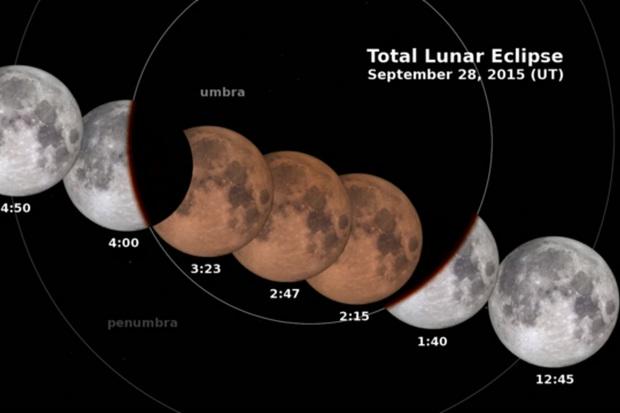This upcoming weekend you will witness a very cool lunar eclipse. Don't miss it because the next one won't take place until 2033.
Lunar eclipses are not that rare, but what makes this one unique, are three celestial events tied into one.
First you have a full moon, second a lunar eclipse, and third , all this takes place when the moon is closest to the earth. The moon's orbit is not circular but elliptical, this means its closer to us at times and farther at others.
The last time this "Supermoon Eclipse" happened was in 1982; there were just five instances of it in the 20th century.
With these three features in place, it should be a very cool event to witness.
So what can we expect:
- The moon will be fully lit in all its celestial glory, a full moon this weekend.
- The lunar eclipse happens on Sunday September 27th. This is when the earth blocks the sun's light from hitting the moon. In essence the earth's shadow will cover the moon.
- Lastly, all this takes place during lunar perigee, when the moon is in the closest part of its orbit to Earth.(also known as a Supermoon)
The following is from Space.com
During lunar perigee, the moon appears larger and brighter in the sky, which is why a full moon coinciding with perigee is known as a "supermoon." (A "minimoon" is when the full moon is at its farthest point from the Earth.) This large moon will present the perfect canvas to watch the Earth's shadow slide over and block the moon's light.
The moon will be shrouded in shadow Sunday night or early Monday morning.
It will enter the dark part of the Earth's shadow at 9:07 EDT Sunday, and it will enter a total eclipse by 10:11 p.m. EDT before it begins to emerge from the shadow 12 minutes later.
Areas that cannot see the full eclipse, because sunset comes too late or sunrise too early, may still be able to see part of the moon obscured.
And if that wasn't enough:
This eclipse carries another name as well, "Blood Moon"
The moon doesn't simply disappear into Earth's shadow during a lunar eclipse; instead, it's illuminated by an eerie, reddish glow of the light refracting through the edges of Earth's atmosphere.
Check out this explainer video, again courtesy of Space.com:
Click here for a quick video of the Lunar Eclipse

No comments:
Post a Comment